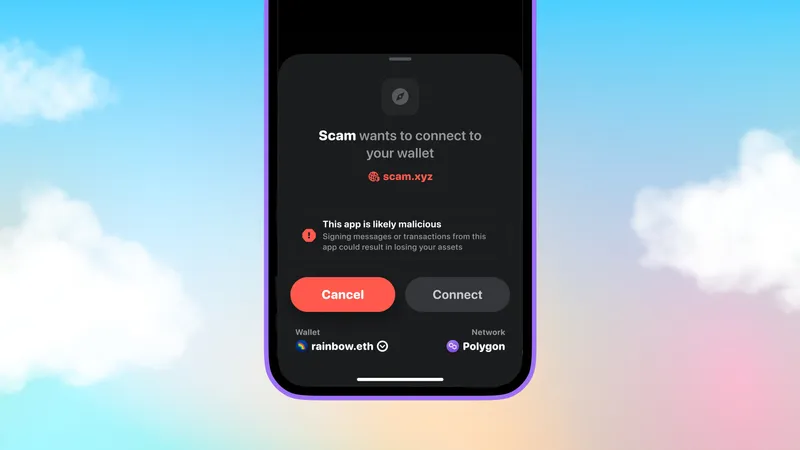 Rainbow Wallet Warning Fix Guide
Rainbow Wallet Warning Fix Guide
 Rainbow Wallet Warning Fix Guide
Rainbow Wallet Warning Fix Guide

Rainbow Wallet's "This app is malicious" warning is particularly damaging because Rainbow users are often new to crypto and trust the wallet's guidance implicitly. The warning appears prominently and discourages any interaction.
Rainbow focuses on user-friendly experiences and takes a protective stance toward its users, many of whom are crypto beginners. Their security system is designed to err on the side of caution.
Missing or suspicious WalletConnect metadata triggers warnings
Problems with ENS names or resolution can cause flags
Inconsistencies between mainnet and L2 deployments raise alerts
Tokens not on major lists are viewed with suspicion
Poor interfaces or dark patterns trigger Rainbow's protective systems
Ensure complete and accurate WalletConnect metadata including icons and descriptions
Address any UI/UX issues that might confuse new users
Apply for inclusion in major token lists like CoinGecko
Submit a friendly, clear appeal explaining your project to non-technical reviewers
Rainbow's user base includes many crypto newcomers. They maintain strict standards to protect users who may not recognize scam patterns.
Rainbow shares some security data with other user-friendly wallets targeting similar demographics, though each maintains independent systems.
Not necessarily. Most wallet warnings are false positives caused by overly aggressive automated detection systems. However, it's always good practice to run a security audit to ensure your site hasn't been compromised.
Studies show that security warnings reduce conversion rates by 85-95%. For a typical DeFi project, this can mean thousands of dollars in lost revenue per day. The sooner you resolve the warning, the less impact on your business.
This is not recommended. Users have been trained to trust wallet security warnings, and asking them to bypass these protections will damage your credibility and could be seen as a red flag itself.